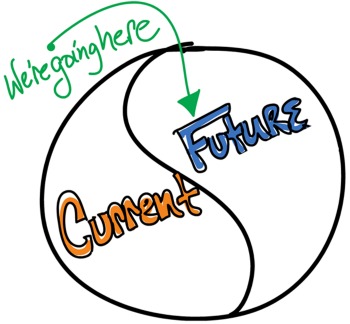 ANDREA TARRELL
ANDREA TARRELL
HNI Marketing Director
According to the University of Berne, half of companies that exist today will not survive longer than a decade. In 30 years, only 15 percent will make the cut, and a mere 5 percent make it to the 50-year mark. (We're proud to announce that HNI celebrated 50 years in 2013 — guess that makes us part of a pretty exclusive club!)
Here's the big question: How does your company look at innovation? Big companies aren’t immune to failure. Size is no guarantee of success. Big brands that have either flopped or been swallowed up by another company include household names such as:
- AT&T (acquired by SBC)
- MCI
- Nextel
- Kmart
- Borders
- Compaq
- Netscape
- Napster
Building innovation into your strategy and into the fabric of your corporate culture is an imperative if you want to build the kind of company that stands the test of time. A recent presentation by business strategist Christine McMahon really got me thinking about change management and innovation and successful businesses. Of the companies that make it, most companies undergo one (or more) types of innovation:
1) Incremental Innovation
Innovation doesn’t have to represent a dramatic shift in product or strategy — instead, it can be the byproduct of ongoing improvements to what you’re doing today. Small changes can add up to help improve functionality, reduce the cost, or appeal to new customers to keep your company from stagnating. Do you have a culture where employees are empowered to bring forth these types of suggestions? In some cases (especially in commodity markets) even a small iteration on an existing offering can be a big enough differentiator to move the needle.
2) Breakthrough Product, Service, or Technology Innovation
Every once in a while, a new product, service, or technology is introduced that changes the game. It disrupts the marketplace and leaves traditional players scrambling. The debut of Uber (and the technology that enables their approach) is one recent example of this kind of breakthrough. The tricky thing with this kind of innovation is that if it’s really new and different enough, it’s difficult to find solid proof in the market that the strategy will work. There’s risk in being the trailblazer, but great reward as well.
3) Business Model Innovation
Your internal structure, processes, and operations can be a critical source of differentiation. Dell, for example, perfected the “build-to-order” model of manufacturing its computers, greatly reducing the time it took to get product to customers and eliminating the cost of excess product left by imprecise demand forecasting. Dell’s ability to meet customer demand more effectively than its competition firmly established its position as the market leader in laptops and personal computers (ahead of the Gateway, HP, and other competitors as the market took shape).
How can your internal operations be structured to create a competitive advantage? Where can you eliminate MUDA (or waste) in your process? [Note: Recent reports in business publications suggest that Dell may be moving away from its famed “build-to-order” approach. Our takeaway? You can never stop looking for ways to innovate.]
4) New Venture Innovation
Sometimes a new set of skills, perspective, or identity is required to stay competitive. You may need to enter a new market or adapt to appeal to entirely new groups of people. To really classify an innovation as a new venture, the new market a company is pursuing needs to be so different from its current market that it requires an altogether different infrastructure.
The classic example of this kind of innovation is Bic — they started as a pen company, but when the risk of stagnation reared its ugly head, the brand broadened its perspective to reframe itself as a disposable products company. Today, the company makes everything from lighters to razors and is remarkably competitive in seemingly unrelated market segments. In hindsight, the strategy clearly worked, but can you imagine the reaction in the room when someone first suggested that they do something completely unrelated to their core business of producing writing implements?
Where Does Innovation Fit into Your Organization?
Innovation have to be a part of your business strategy. Every company goes through a cycle of growth and maturity. Those who recharge their business renewal and innovation will be here for years to come — and those who don’t are doomed to obsolescence.
Related Posts:
Uber Shows How Change Won't Brake for Your Company
Keys to Sustaining Organizational Change for the Long Haul
Living Your Brand: Leveraging an Intangible Asset
Mighty Mouse: 5 Lessons from Disney World That Can Improve Any Business
.png?width=69&height=53&name=Acrisure%20Logo%20(White%20Horizontal).png)

